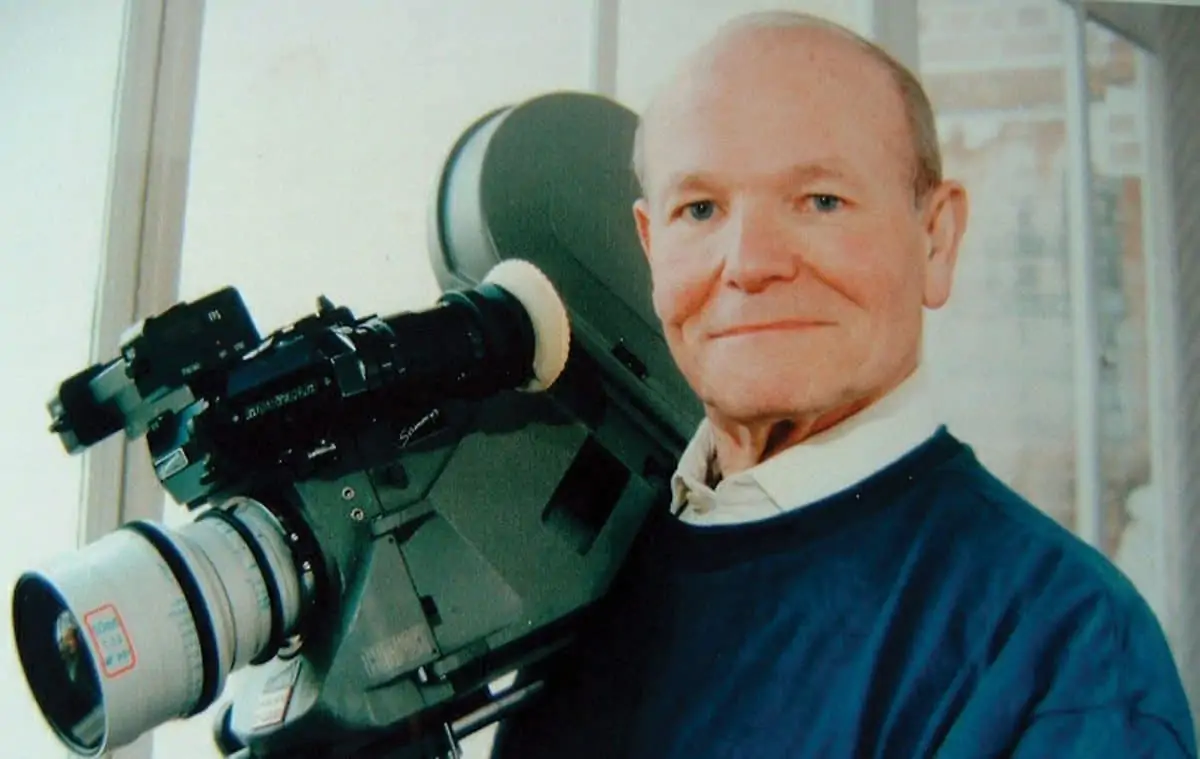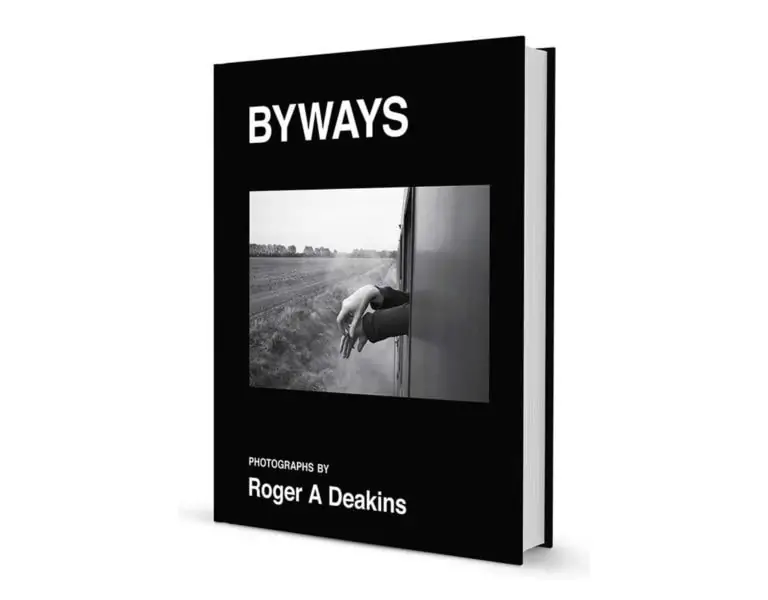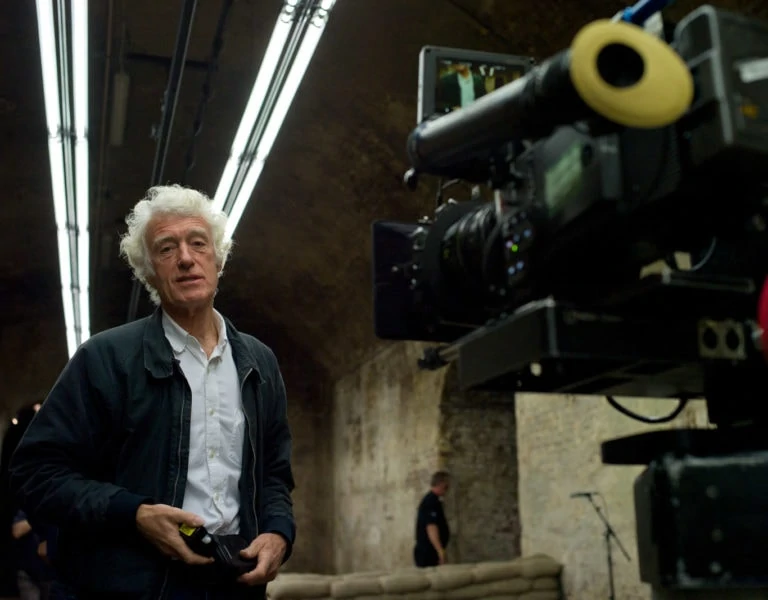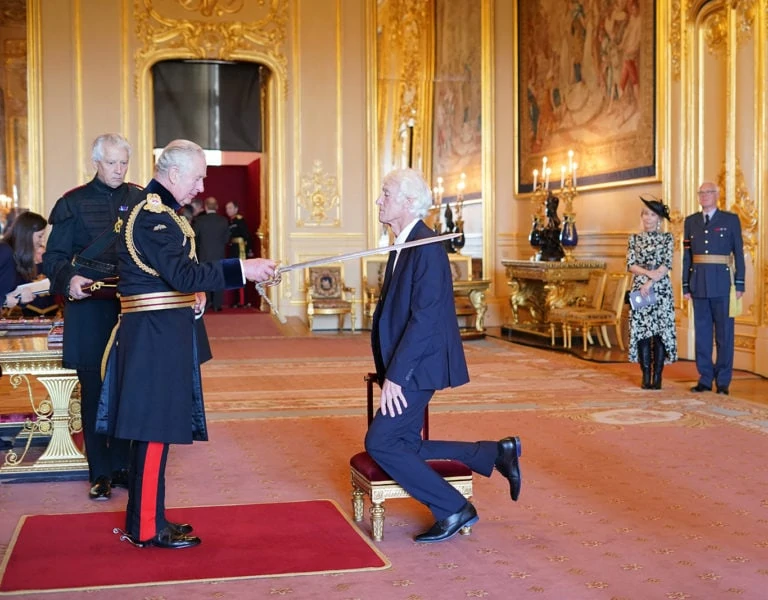Mr Sydney
Clapperboard / Sir Sydney Samuelson CBE, BSC, Fellow BKSTS
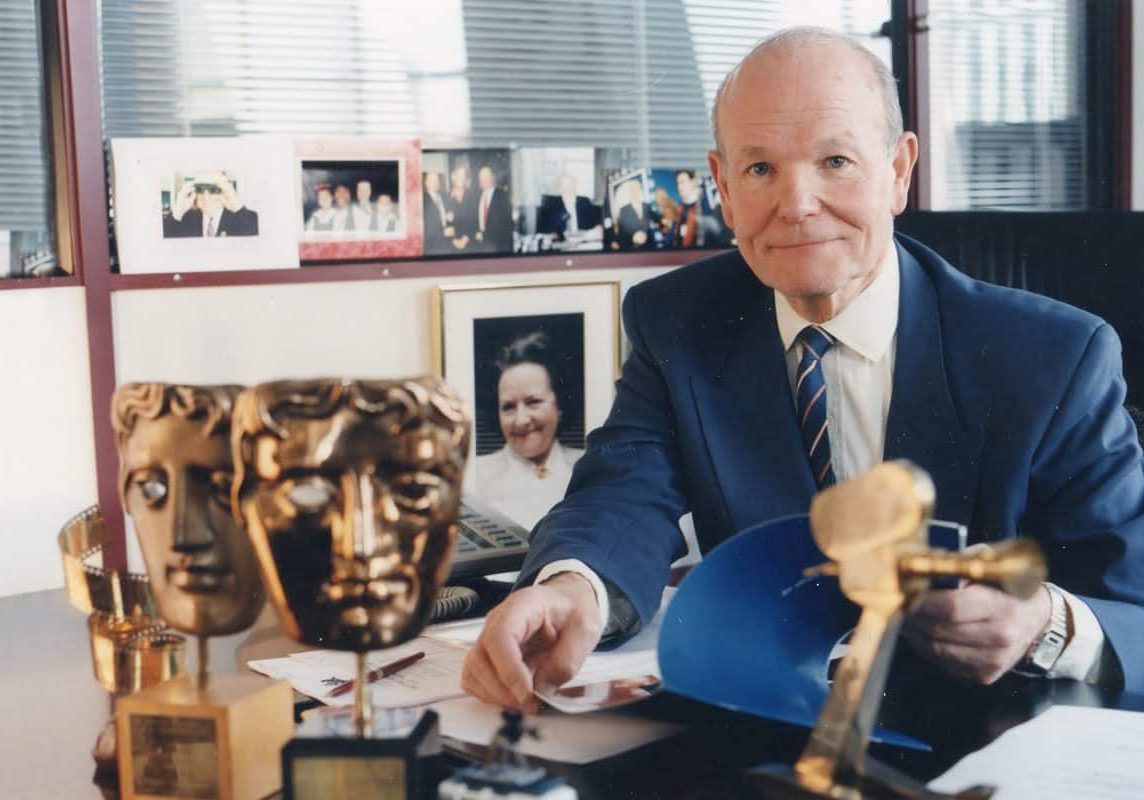
Mr Sydney
Clapperboard / Sir Sydney Samuelson CBE, BSC, Fellow BKSTS
BY: David A. Ellis
Sir Sydney Wylie Samuelson CBE, BSC, Fellow BKSTS left school in December 1939, aged fourteen, and started out as a rewind boy at the newly-built Luxor Cinema, Lancing, in West Sussex, which opened in January 1940. Little did he know then, he would become a major player in the British film industry. Along with his many considerable achievements, he became the first British Film Commissioner, was awarded the CBE in 1978 and was knighted by Prince Charles in 1995, for his services to the industry.
Samuelson was born on the 7th December 1925 in London. His father was George Berthold Samuelson (1889-1947), a producer and director in the silent days. Sydney’s mother acted in some of the silent pictures. She appeared in the 1925 film She under the name Majorie Lamont. The film was produced by G. B. Samuelson, directed by Leander de Cordova and photographed by Sydney Blythe. After eighteen months at the Luxor, young Samuelson did projection work in the Midlands. Later, he worked for Gaumont British News as a trainee assistant editor. After being demobbed from the RAF he went into cameras and was one of the cameramen in Westminster Abbey who photographed the crowning of the Queen in 1953.
He founded, and later with his brothers David, Tony and Michael, developed Samuelson’s, a film equipment hire business. They ran a thriving enterprise that became known and respected worldwide. The business was originally run from his home in Finchley, then at a half shop in Hendon and eventually from their newly-built headquarters in Cricklewood, north London. They rented cameras, both 16mm and 35mm. They also supplied sound, grip, and later, lighting equipment. They specialised in Arriflex cameras and at one point had over a hundred complete outfits either out on rental or being serviced ready for production by their engineers.
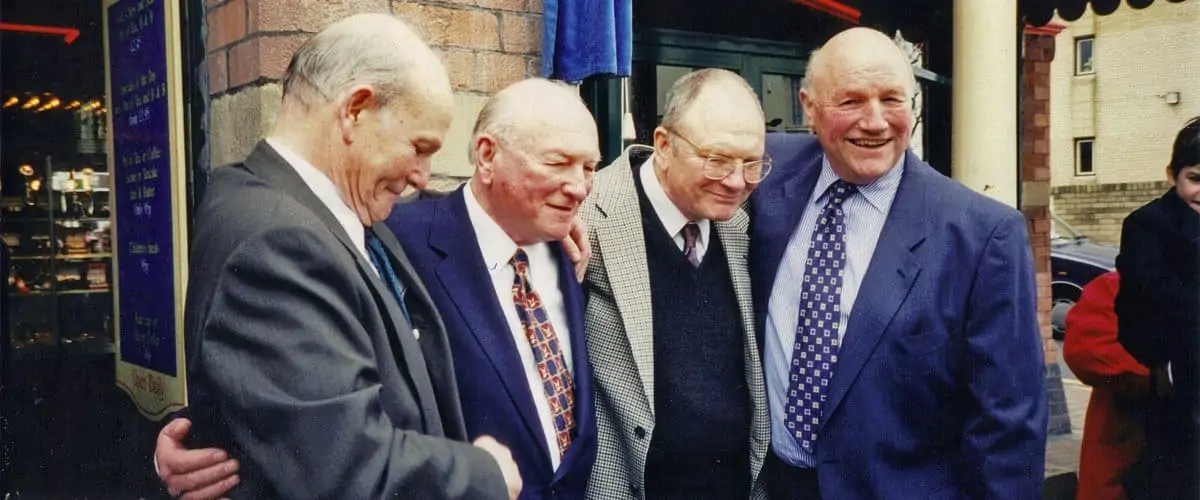
A great many people worked at Samuelson’s, including his nephew Barry Measure. He started with the company part-time, when he was at university. Measure became full-time and went on to become general manager of the camera rental division. John Rendall also worked there until his retirement. Rendall recalls: “It was a real pleasure for me to work for Sammy’s. Sydney let the trained teams get on with everyday challenges, and praise was forthcoming when an especially tough job was cracked. He was always there for advice and decisions. Sammy’s had a real ‘family’ feeling throughout the company.”
Samuelson remembers, “When people had served the company for twenty years, we didn’t give them a watch or clock – we gave them a caricature of themselves, drawn by the iconic caricaturist, Ralph Sallon. He came round to our offices to draw the subjects.”
Samuelson’s created a new centre ‘The Production Village’, built around a quarter of a mile from their main premises. The site was a conversion from a Victorian stable yard. The original buildings were different sizes and were turned into ‘silent’ film stages. The Village had two new pubs; one of them he named ‘The Magic Hour’, which even had gas lighting. Sydney’s brother, Tony, was in charge of the Village, where among others, a sequence of Hellraiser (1987) was shot, photographed by Robin Vidgeon BSC.
The company had branches in Paris, Amsterdam and at Heathrow airport for airfreight. Further afield, it had branches in Australia, in Auckland and Wellington New Zealand, and in four states in the USA. Samuelson’s once owned the famous Hammer Studios at Bray.
So what did they do if a job came in and they couldn’t supply some of the equipment? “We were very friendly with one or two other rental companies,” says Sir Sydney. “If one of us was short of something we would be able to borrow it from our competitors. I don’t think we ever turned a job down. We had a very good friend by the name of Don Long, who had quite a lot of 35mm Arriflex equipment. We called on him first, if we were short of something.”
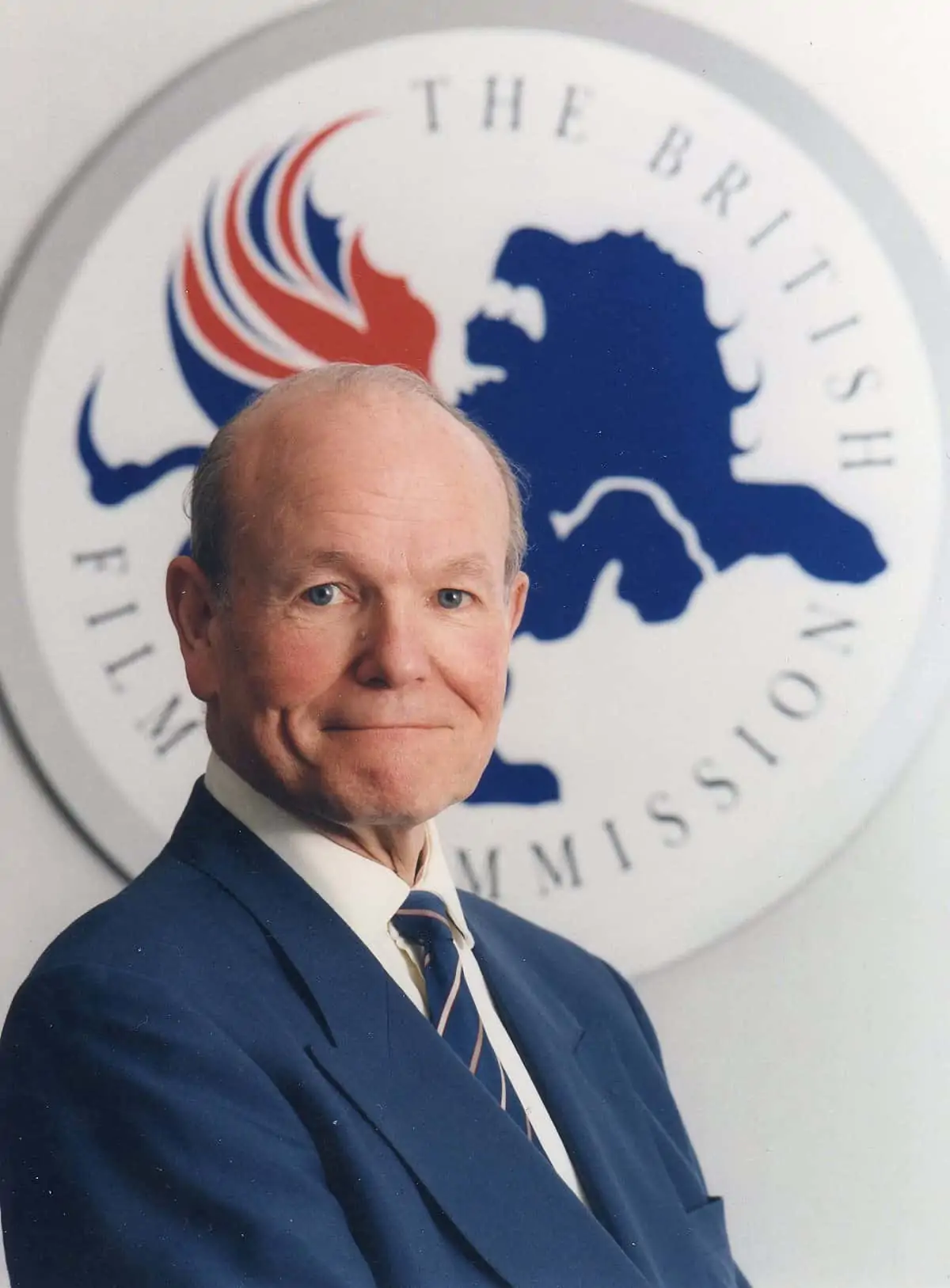
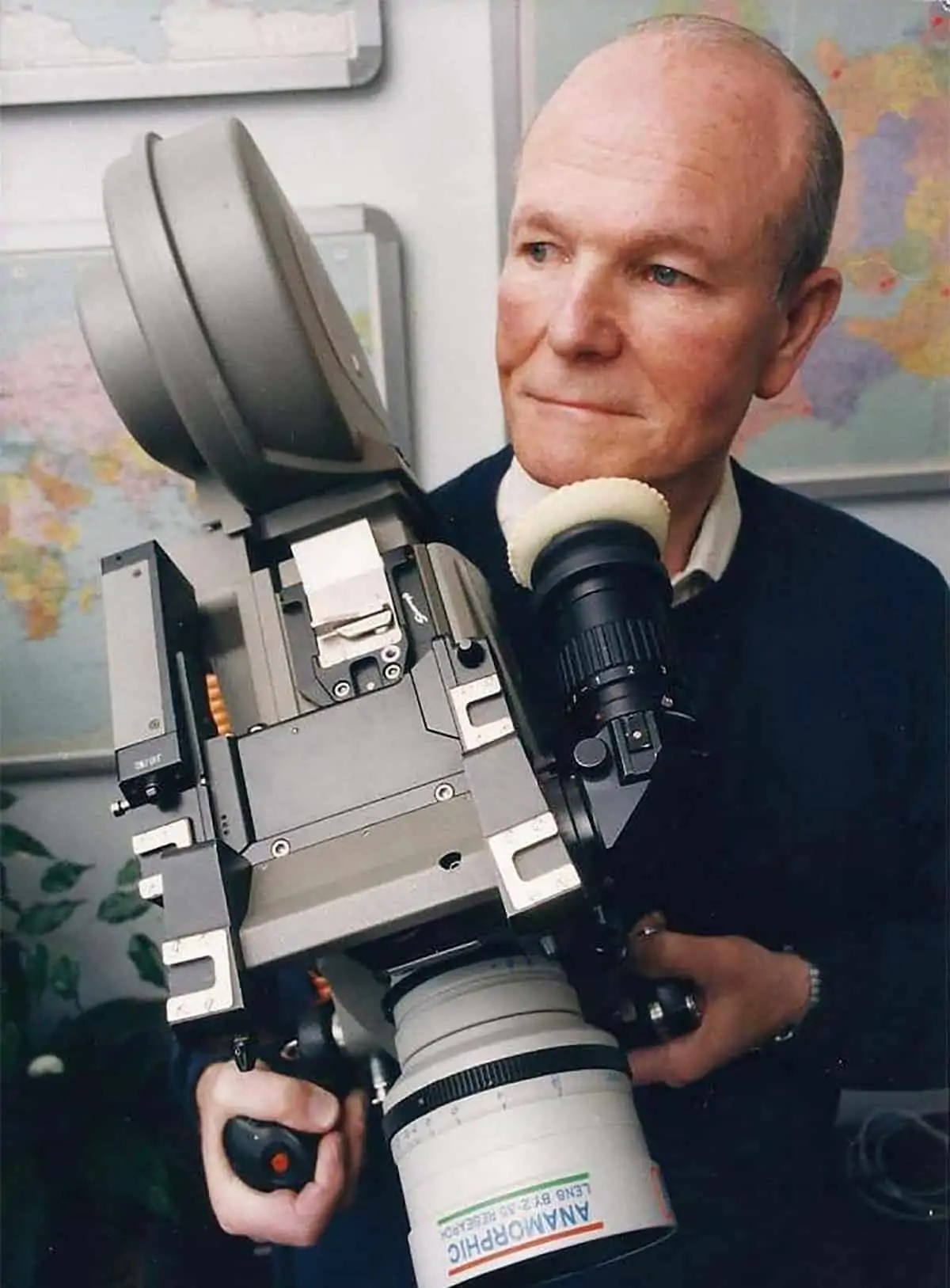
He said when Samuelson’s became a major public company, and international, his job became expansive and challenging. “The happiest time for me,” he said, “was immediately before we left Hendon to move to Cricklewood. I suppose we had, at that time around fifty on the staff, and I knew the first names of everyone. Sadly, when you get bigger, you can’t possibly know the names of them all.”
Asked if he still meets up with former employees, Sir Sydney says, “One of the nice things in my senior years is that I am still invited to industry events. Often somebody will come up to me with a friend and say: ‘I would like to introduce you to Sydney, my former boss.’ The friend will say, ‘You don’t need to introduce me to Mr Sydney. Mr Sydney gave me my first chance.’ There were four Samuelsons in the business. So, from the earliest days, I was known by all as Mr Sydney.”
An unusual thing the company did was to put a small plastic plate on the back of each camera listing what feature films it had been used on. Samuelson said, a new crew would always be interested in which films their camera had been used on before.
"One of the nice things in my senior years is that I am still invited to industry events. Often somebody will come up to me with a friend and say: ‘I would like to introduce you to Sydney, my former boss.’
The friend will say, ‘You don’t need to introduce me to Mr Sydney. Mr Sydney gave me my first chance.
There were four Samuelsons in the business. So, from the earliest days, I was known by all as Mr Sydney.’"
- Sir Sydney Samuelson CBE BSC
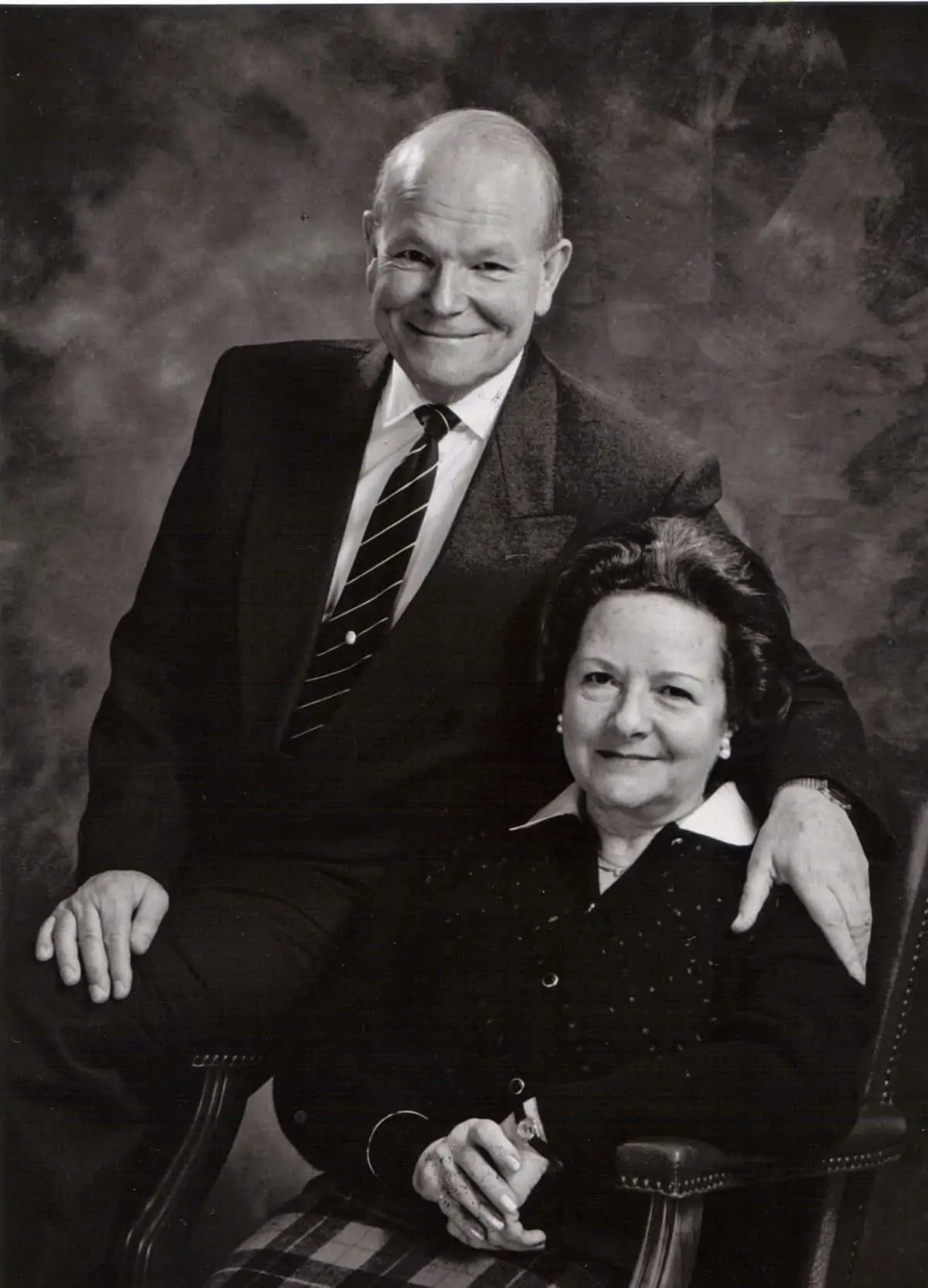
Sir Sydney has rubbed shoulders with many big and influential names, and was close friends with David Lean and Richard Attenborough. “David Lean – an excellent stills photographer himself – was very much into the technical side of each of his movies. He would call-in when his crew were testing equipment with us. Even when he wasn’t shooting a picture, he would come over for lunch, especially if I had a new piece of equipment to show him. We manufactured camera cases and, on one occasion, we produced a complex fitted case for his own extensive Hasselblad stills camera ...while he was having lunch!
“I first got to know Richard Attenborough when I was the second or third camera assistant on the feature The Baby And The Battleship (1956, dir. Jay Lewis, DP Harry Waxman). Dickie, as he was called, wouldn’t pass anyone by, without saying, ‘Hello, how are you today?’ Years later I got to know him because I was elected to the council of BAFTA, and he was the current Chairman. We became good friends for life.”
In 1994 Samuelson was the subject of the ITV show ‘This is Your Life’, when Michael Aspel confronted him with the big red book. One of the people taking part was a surprise to him, the great cinematographer Freddie Young BSC, who had been a very good friend for many years. Samuelson said, “I remember when the exciting American Moviola crab dolly came on the market, we purchased the first one available in the UK and demonstrated it immediately to Freddie at the tiny St John’s Wood Studios, where he was shooting tests for The Seventh Dawn (1964). The director, Lewis Gilbert, and the camera crew, including Freddie thought it was brilliant and hired it there and then for the picture.”
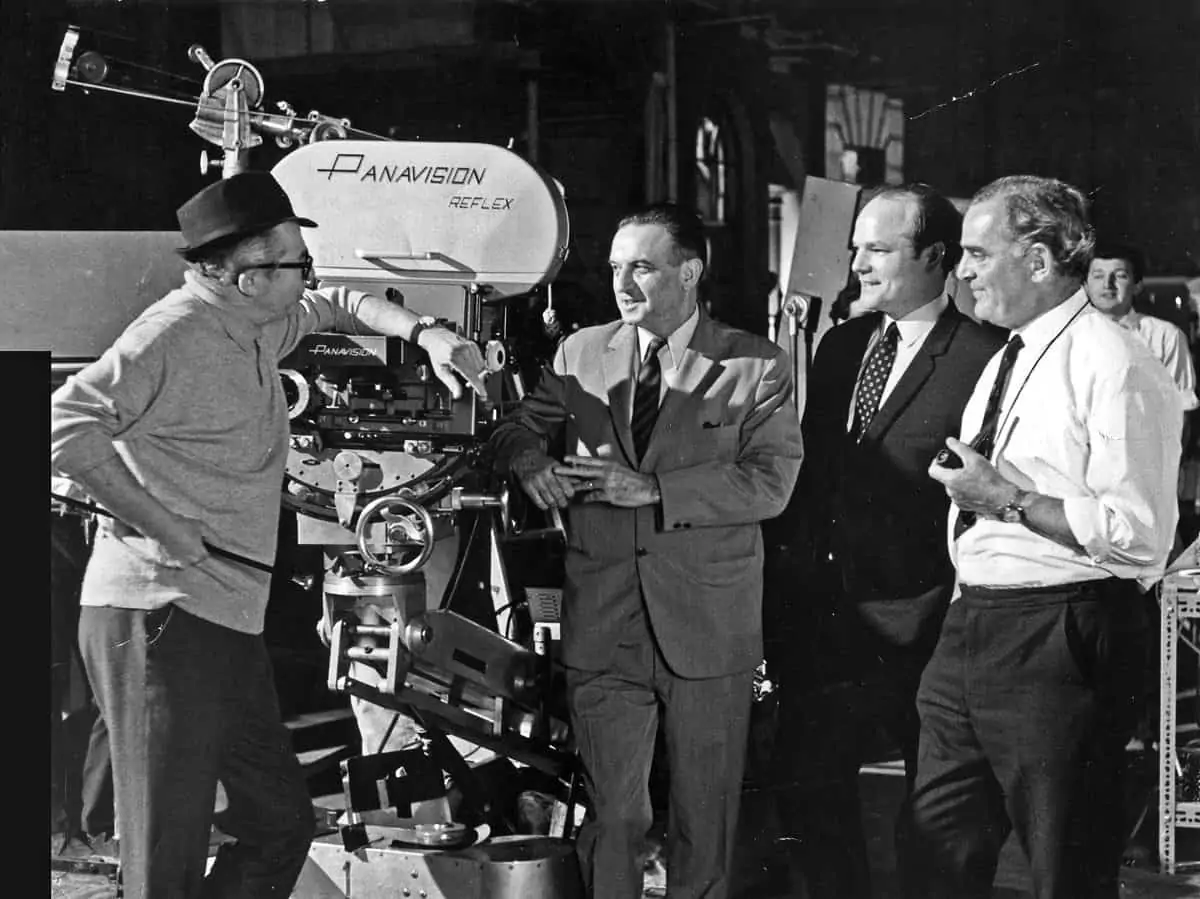
Samuelson and two of his brothers, David and Michael, followed in their father’s footsteps and worked with film. His other brother, Tony, trained as a barrister and became financial and legal advisor to the Samuelson Group. Sydney’s sons, Peter and Marc also went into the movie business as producers. Marc is currently Chairman of the BAFTA Film Council.
There is now a Lady Doris and Sir Sydney Samuelson award by the International Moving Image Society (IMIS), given to: ‘A person or corporate body for an outstanding contribution to British Cinema Presentation. The use of all forms of technology for the benefit of audiences suffering from every kind of disability being particularly significant’. It is an honour of which Sydney is particularly proud.
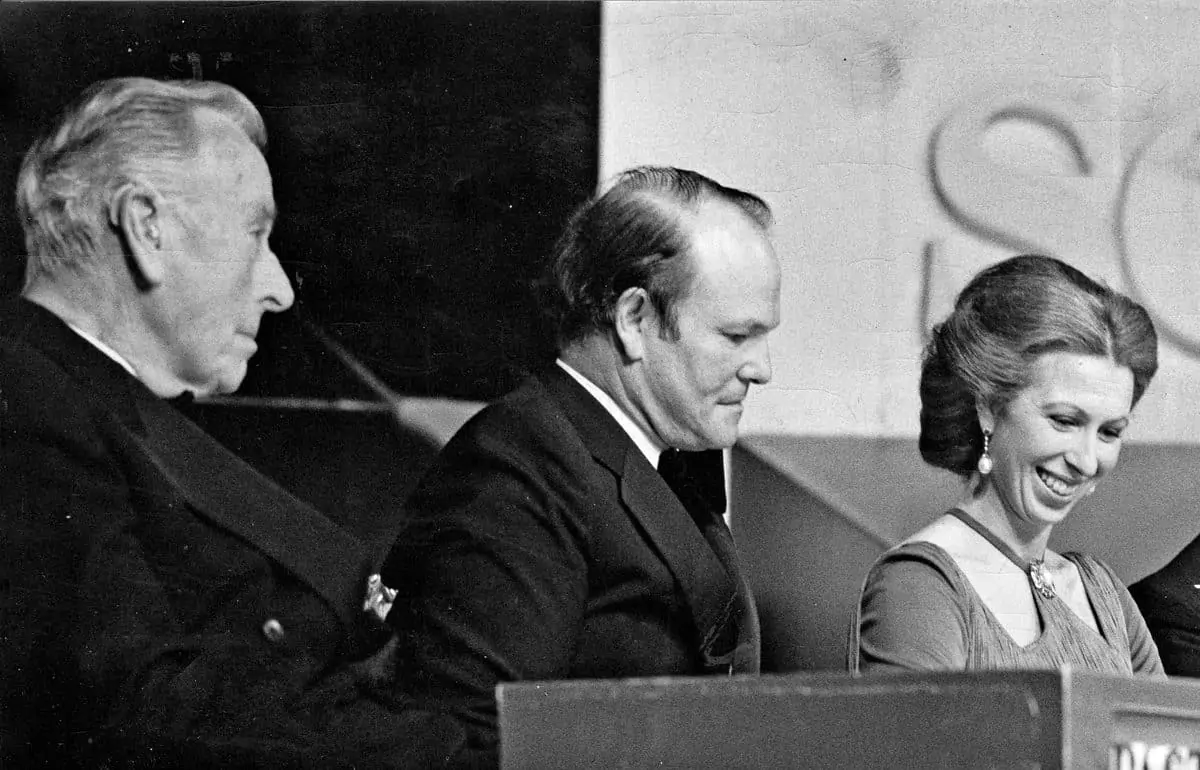
Sir Sydney Samuelson: Awards & Achievements
- 1948 – Joined Association of Cinema Technicians (ACT) as trainee documentary camera assistant (now the Broadcasting, Entertainment Cinematograph and Theatre Union, BECTU)
- 1961 – Britannica Award for Television News Film, BBC Sportsview
- 1965 – Accepted into membership of the BSC
- 1965 – Became a member of BAFTA and was appointed to Council in 1969. During the following years, served as a permanent Trustee (from 1970). Vice chairman of Council (1971-1973), Chairman of Council (1973-1976) and chairman of the Sir David Lean BAFTA Foundation (2004-07). Chairman, Board of Management (1976-2002). Chairman of the BAFTA Shell UK Venture Fund (1988-91). With more to come!
- 1967 – Received BSC Golden Camera Award for outstanding services to the UK film industry
- 1969 – Appointed to BSC Board of Governors
- 1970-2009 – Hon. Technical Advisor, Royal Naval Film Corporation
- 1969-1992 – Cinema & Television Benevolent Fund (CTBF), member of Council/Executive Committee. Became Trustee (1982-90) and then President (1983-86).
- 1976 – elected First Vice-President of the BSC
- 1980-81 – President of Cinema & Television Veterans. Member of President’s Council (2000-today)
- 1985 – Received BATFA’s Sir Michael Balcon Award
- 1989 – Hon Member for Life of BECTU
- 1993 – Fellow of BAFTA
- 1997 – Fellow of The British Film Institute
- 1997-2003 – Member of BECTU History Project
- 1997 to today – Founding Trustee of Guild of British Camera Technicians (GBCT)
- 1997-2006 – Founding President of UK Jewish Film, and an Hon. Life Patron from 2006
- 1995 Member BKSTS – The Moving Image Society (now IMIS, The International Moving Image Society). Fellow (1970-today).
- 1978 – Awarded CBE Commander of the Order of the British Empire
- 1986 – Guild of Film Production Executives – Award of Merit
- 1987 – Freeman of The City Of London
- 1994 – Subject of ITV’s ‘This is Your Life’
- 1995 – Kt (Knighthood) for Services to the British Film Commission
- 1996 – Became Doctor - Honoris Causa – of Sheffield Hallam University
- 1997 – Association of Film Commissioners International – Howard Horton Memorial Award
- 1997 – Birmingham Film & Television Festival Award, recognising exceptional work in developing British Film and Television, and encouraging the media section in Birmingham
- 2003 – recipient of BKSTS Award of Merit
- 2002 to today – President of The Projected Picture Trust (PPT)
- 2011 – First recipient of The Friese - Greene Award for An Outstanding Career in Cinema & Television
- 2015 – recipient of BKSTS Lifetime Achievement Award
